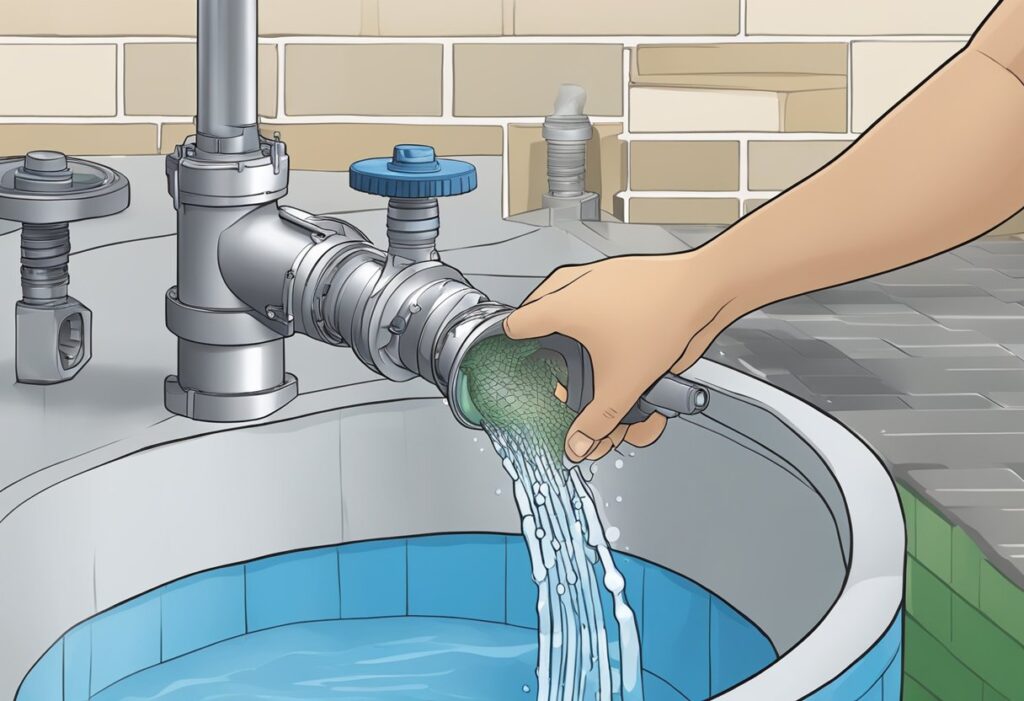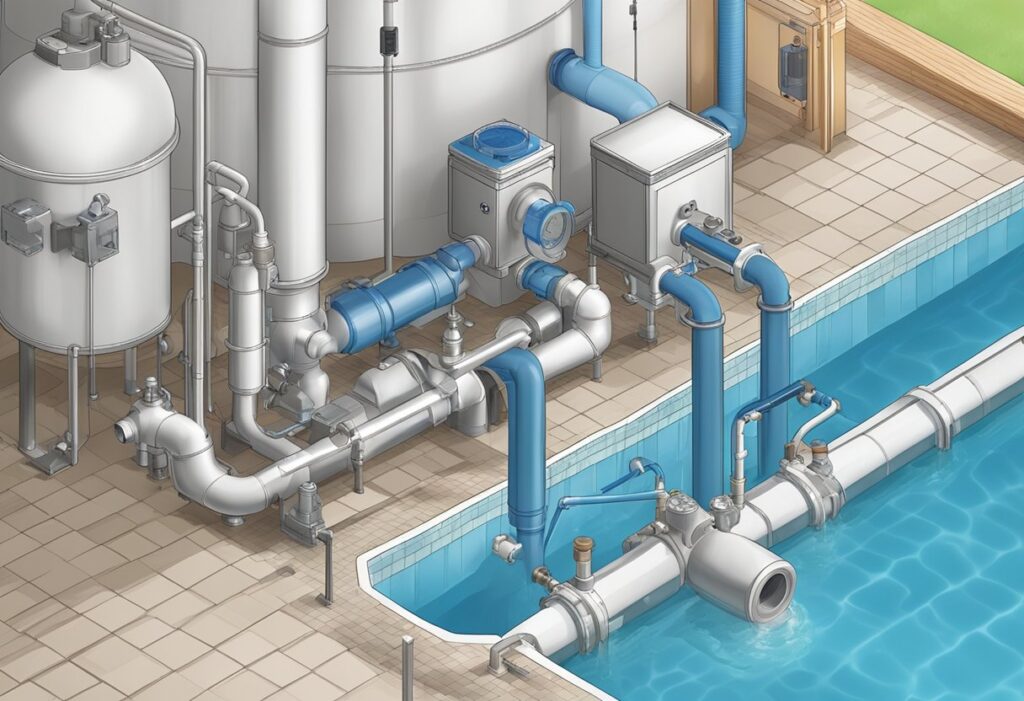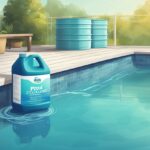Maintaining a clean and well-functioning pool is paramount for any pool owner, and a critical component of this is the regular backwashing of the pool filter. Over time, your pool’s filtration system accumulates dirt, debris, and other contaminants that can clog the filter, leading to reduced efficiency and dirty water. Backwashing is the process of reversing the flow of water through your filter to flush out this trapped dirt and ensure that your pool’s water remains clean and clear.

Most pool filters require backwashing when the pressure gauge indicates a rise of about 8-10 psi over the starting pressure or if you notice a decline in the pool’s water quality or flow rate. Sand filters and diatomaceous earth (DE) filters are common types that may require backwashing, and the process for each is similar, typically involving turning off the pump, adjusting the filter valve to the backwash position, and running the pump for a few minutes until the waste water runs clear.
Understanding how to properly backwash your pool filter is not only essential for keeping the water inviting, it also protects the longevity of your filtration system. A well-maintained filter sustains optimal circulation and plays a key role in the overall health of your pool, ensuring that your time spent in the water is both enjoyable and safe.
Understanding Pool Filters and Their Maintenance
Maintaining your pool filter properly is crucial for ensuring clear, sanitary swimming conditions. This section explains the different filters available, why routine upkeep is essential, and how to recognise the need for backwashing.
Types of Pool Filters
Your pool’s cleanliness is contingent on the type of filter you have in place. There are three main types:
- Sand Filters: Utilise a bed of sand to capture debris. Water is pushed through the sand, which traps particles.
- Cartridge Filters: Contain pleated, polyester-based cartridges that filter out contaminants. They have a larger surface area than sand filters, capturing finer particles.
- Diatomaceous Earth (DE) Filters: Use DE powder to coat grids in the filter, trapping dirt as small as 5 microns.
Each type has a different procedure for cleaning and maintenance.
Importance of Regular Maintenance
Consistent inspection and cleaning of your pool filter are key to prolonging its life and ensuring efficient performance. Elements to monitor include:
- Operating Pressure: Measured by a pressure gauge in pounds per square inch (PSI). An increase in filter pressure indicates clogging and the need for maintenance.
- Water Flow: Reduced water flow might signal a dirty filter. You should aim to maintain optimal water flow for effectiveness.
Simple tasks such as removing and rinsing off a cartridge, backwashing a sand filter, or replenishing DE powder can significantly impact your pool’s water quality and flow.
Recognising When to Backwash
Backwashing is a cleaning method specific to sand and DE filters. When your filter’s pressure gauge reads 8-10 PSI over the normal operating pressure, it’s usually time to backwash. The process includes:
- Turning off the pool pump.
- Setting the filter valve to ‘Backwash’ position.
- Running the pump until the sight glass runs clear, which normally takes about 2 minutes.
This reverses the water flow to clean out the trapped dirt from the filter media.
Regular backwashing and maintenance are vital for the health of your pool and the efficiency of the filtration system. Use the gauge, flow, and other indicators to determine the right schedule for your pool’s unique requirements.
Executing the Backwash Process
Effectively backwashing your pool filter is essential for maintaining clear water and proper filtration system function. The following steps will guide you through preparing, conducting, and finishing the backwashing process.
Preparing for Backwash
Before commencing the backwashing process, ensure your pool’s system is ready for the task:
- Turn off the pool pump to prevent any water flow during the setup.
- Attach the backwash hose to the filter’s waste or backwash port to direct water away from the pool and landscape.
- Check the surroundings for any potential obstructions or hazards around the hose discharge area.
Step-By-Step Guide to Backwash
Performing the backwash correctly will help remove accumulated debris and contaminants from the filter.
- Set the multiport valve to the ‘Backwash’ position and secure it. If your system utilises a push/pull valve, open the backwash gate instead.
- Restart the pump and observe the waste water through the sight glass or discharge point. Continue backwashing until the water runs clear, generally around 2 minutes.
- Monitor the process, ensuring that water is properly flowing out and contaminants are getting flushed through the waste line.
Rinse After Backwashing
Following the backwashing, a rinse cycle ensures any residual debris within the system is cleared.
- Shut off the pump once again to adjust the settings without pressure in the system.
- Set the multiport valve to the ‘Rinse’ position and lock it in place.
- Run the pump for approximately 1 minute, allowing the clean water to settle the media inside the filter and flush out the last of the debris from the valve.Remove excess air from the system by opening the air relief valve if your filter has one.
- Return the valve to its standard ‘Filter’ position and turn the pump back on. The system is now ready to resume normal filtration operations.
Post-Backwashing Steps
After backwashing your pool filter, restoring the pool to its optimal condition is essential. The following steps will ensure your swimming pool remains clean and safe for use.
Checking and Restoring Pool Water Level
When you’ve completed backwashing, it’s normal for the water level in your pool to have dropped. It’s crucial to check the water level and top it up to the recommended height, usually halfway up the skimmer box opening, to maintain proper circulation and filtration. Ensure the water added is clean water, and once the level is correct, reassess and balance the pool chemicals as necessary since the process of backwashing can dilute them.
Disposing of Backwash Water Responsibly
The water expelled during the backwashing process contains contaminants and chemicals which must be disposed of responsibly. Direct the waste line to an area that won’t be affected by this influx, such as the sewer system if local regulations allow it. Do not dispose of backwash water into storm drains or areas where it can cause an algae bloom or negatively impact the environment. When in doubt, consult local guidelines for proper disposal methods to ensure you’re not losing pool water in a way that could harm your surroundings.
Troubleshooting Common Backwash Issues
When backwashing your pool filter, you may encounter a few problems such as leaks, blockages, and water clarity issues. Understanding these specific concerns can help you maintain a clean and clear pool.

Dealing with Leaks and Blockages
Filter Leaks: If you notice water leaking from your filter during a backwash, it could indicate a problem with the O-rings or gaskets. Check these components and replace them if they are worn or damaged. Moreover, leaks might occur in the laterals of a sand filter; inspect for cracks or breaks and replace any faulty lateral as necessary.
Clogged Filter: A clog can prevent proper backwashing. For sand filters, look for compacted filter sand, which you may need to loosen or replace. With cartridge filters, remove and clean the cartridges thoroughly to remove accumulated dirt and debris. If you are using a DE (diatomaceous earth) filter, ensure that the DE powder is correctly replenished and not clumping together.
Addressing Water Clarity Concerns
Cloudy Pool Water: If the water remains cloudy after backwashing, assess your filtration process. Ensure that the pump runs long enough for effective filtration, and verify that the pool chemistry is balanced, particularly after a backwash. For sand filters, it could be time to change the filter sand if it’s no longer trapping dirt and debris.
Clear Water: When aiming for clear water, consistent backwashing is key. However, over-backwashing can lead to issues as well. It’s essential to backwash only when necessary, such as when the pressure gauge indicates a 7-10 psi rise above normal operating pressure, to maintain optimal filtration efficiency.











